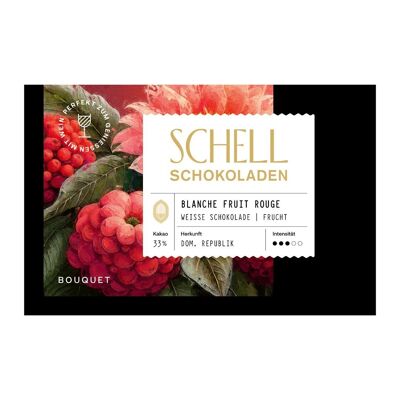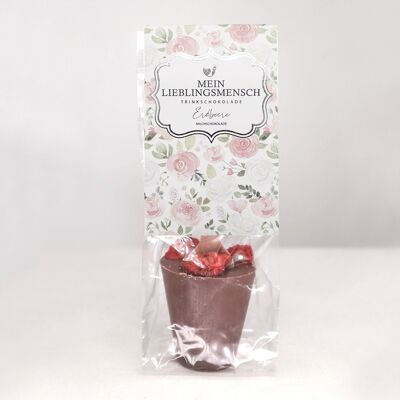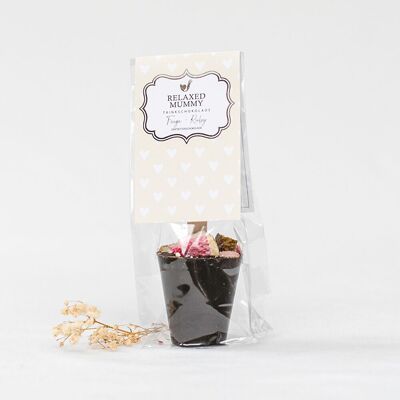


White drinking chocolate refined with amaretti. An interesting taste nuance is given to this Amaretti drinking chocolate by the addition of bitter almond oil. This is obtained from the seeds of bitter almonds, peaches, apricots, cherries or plums. For this purpose, they are pressed and the bitter almond oil is extracted from the resulting press cake by maceration with water. Another little eye-catcher is the amaretti on the chocolate. It comes from our own production and is made from beaten egg whites, sugar, ground almonds and apricot kernels. The origin of drinking chocolate can be traced back to the Aztecs. The cocoa plant, and consequently the bean, was sacred to her. The beans were not only used as an offering and a means of payment, but also to prepare a bitter spiced drink. It contained water, cocoa, corn, vanilla, cayenne pepper and salt. This blend tastes much different from our well-known cocoa drinks. With the conquest of the Aztec Empire in the 16th century. Cocoa came to Europe in the 18th century through the Spanish. Here it first spread to the noble houses and courts of Europe. Cocoa later arrived in Germany, but was only available in pharmacies, as it was said to strengthen the stomach, invigorate the spirits, be an aphrodisiac, relieve pain and also have a filling effect. These properties made the drink popular in higher circles. This was especially true when it was discovered that a tasty drink was created when combined with cane sugar. This was well received by a larger number of people. At that time, the deoiling of cocoa powder was not yet known. Therefore, the beans were simply ground and pressed into bars. No distinction was made between cocoa powder and cocoa mass. As a result, the final product was not suitable for direct consumption as it contained neither sugar nor milk. The tablets were broken into pieces and sold accordingly. It was then drunk with water and sugar, but the dosage of cocoa depended on how wealthy the buyer was. Accordingly, cocoa was also used as a dowry in some circles. In 1657, the first chocolate house was opened, but the price did not fall because the beans only grew in South America. However, here too, the Europeans began to refine the drinking chocolate with spices. A little later, the variant of drinking chocolate with milk rather than water came to Europe from Jamaica. After the process for deoiling cocoa was invented, the milk variant became very popular. The deoiling process removes a large proportion of the cocoa’s nutrients. This is compensated for by adding milk and also to reduce its bitterness. Today, chocolate is still prepared very differently around the world. In Mexico and Jamaica, a solid paste is made from roasted, whole cocoa beans. This is pressed and, when used, whipped with water and refined with spices. In some European countries the chocolate is dissolved in water, milk or a mixture. To thicken the chocolate, for example, starch is used in Spain, egg yolk in Austria and additional cocoa powder in Italy. In a gift package in combination with our spreads, this drinking chocolate can serve as an excellent souvenir. For Father's Day, but also Mother's Day, chocolate is a present that is not an everyday occurrence. But drinking chocolate is also an extraordinary idea when packaged under the Christmas tree or in an Easter basket. If you want to do something good for yourself and live a vegan lifestyle, then this dark chocolate is made for you or you can give it as a gift to like-minded people if you want something special. You can order chocolate and pralines online here in the Schell Chocolates shop. We deliver the chocolates and pralines to the address of your choice. If you wish, you can also have our handcrafted products sent to friends and family. They will certainly be delighted with the exclusive chocolates or delicious pralines. Or stop by our café and enjoy a delicious piece of cake or tart from our in-house pastry shop with an excellent cup of coffee. There we also offer our exclusive chocolates and pralines to take away.



























